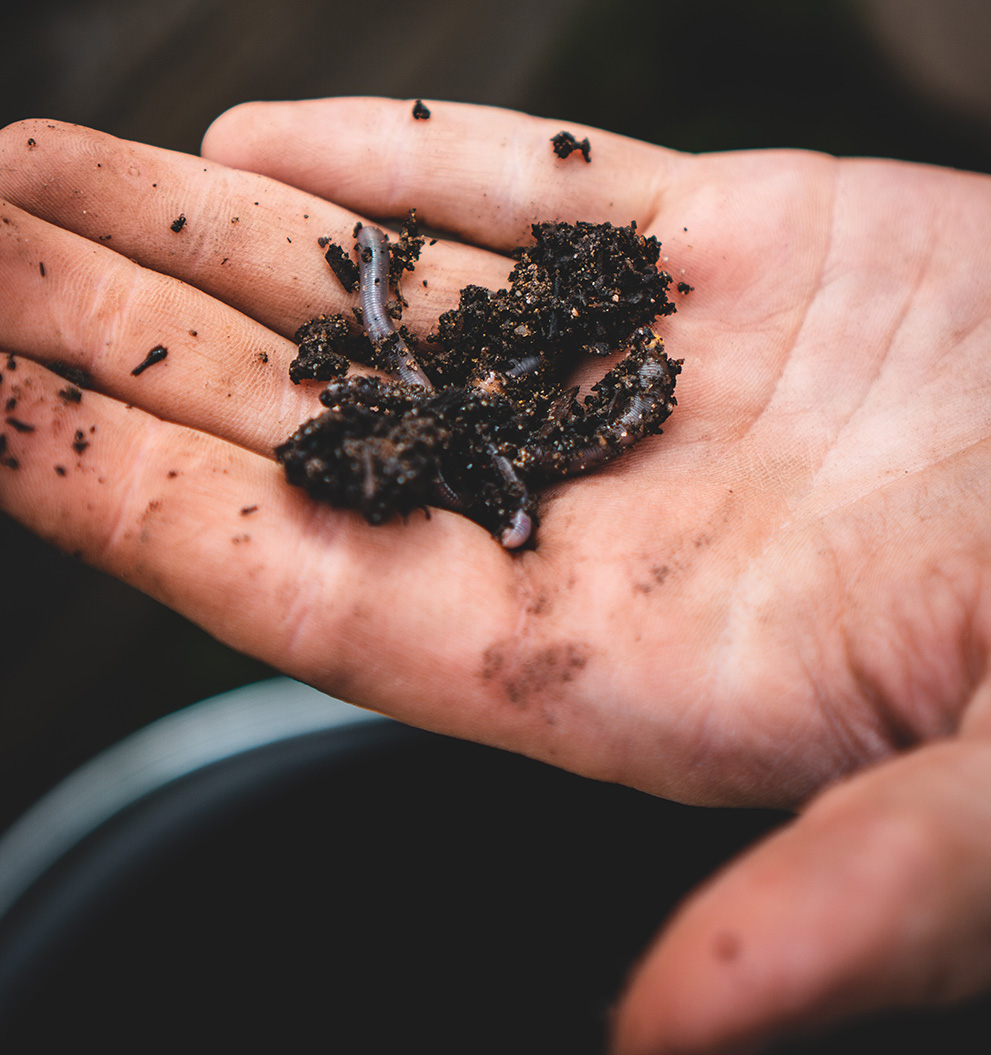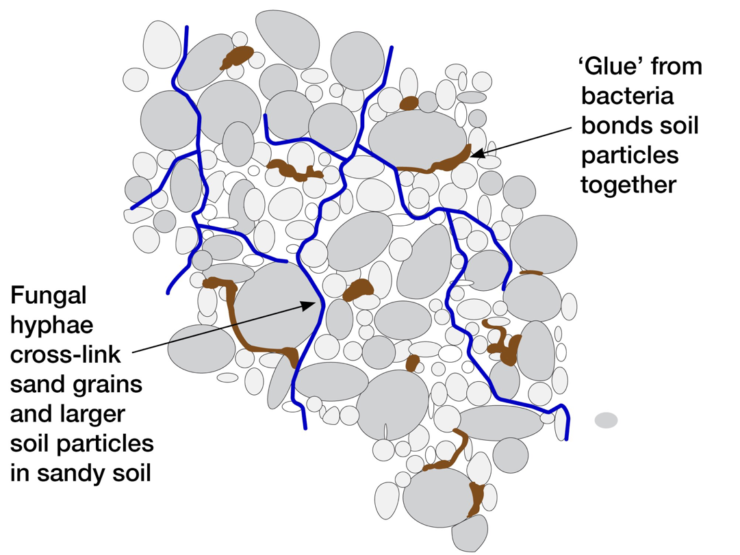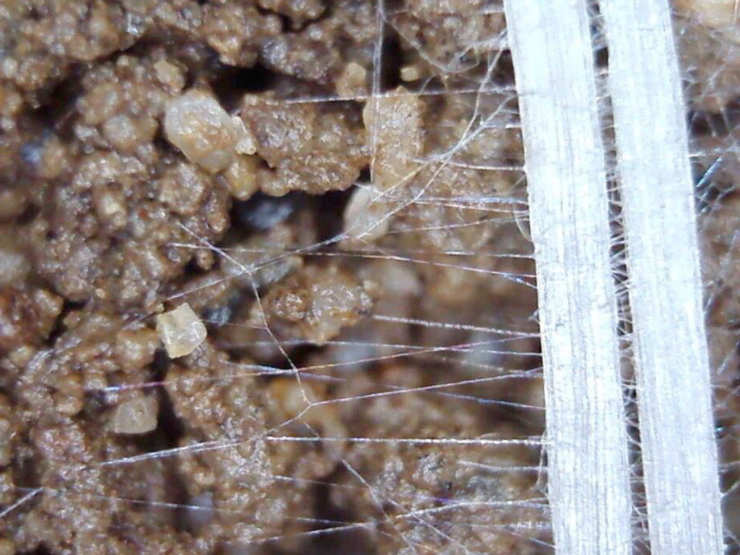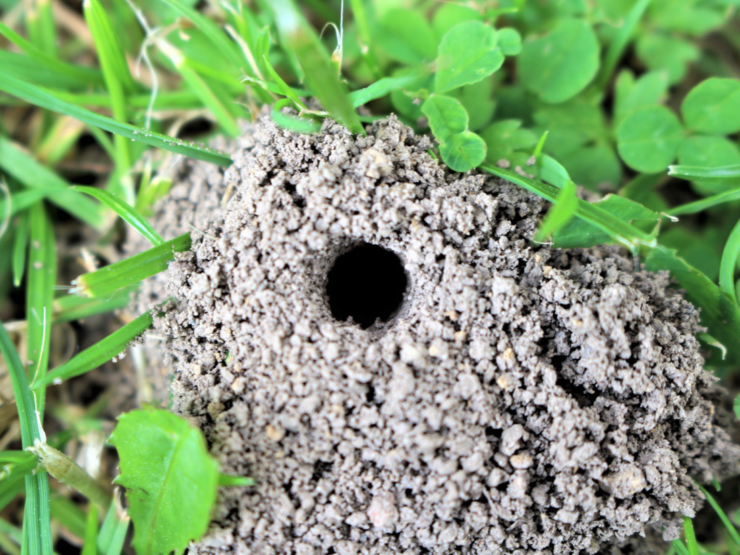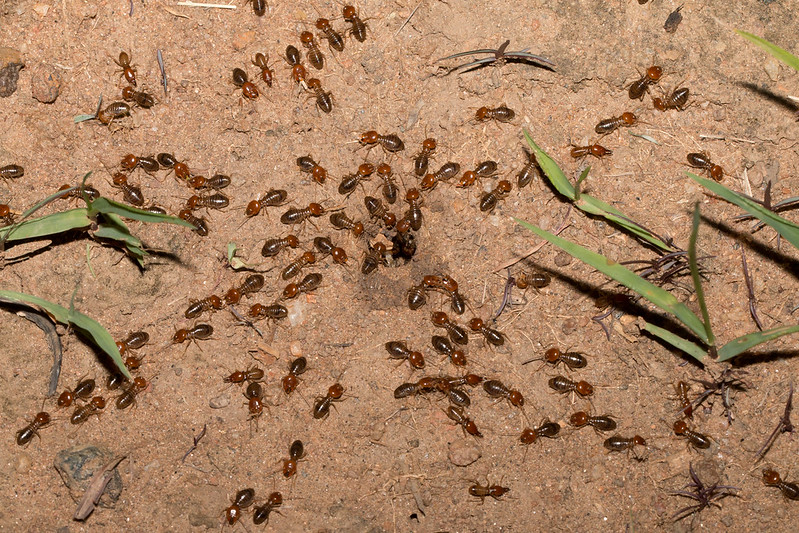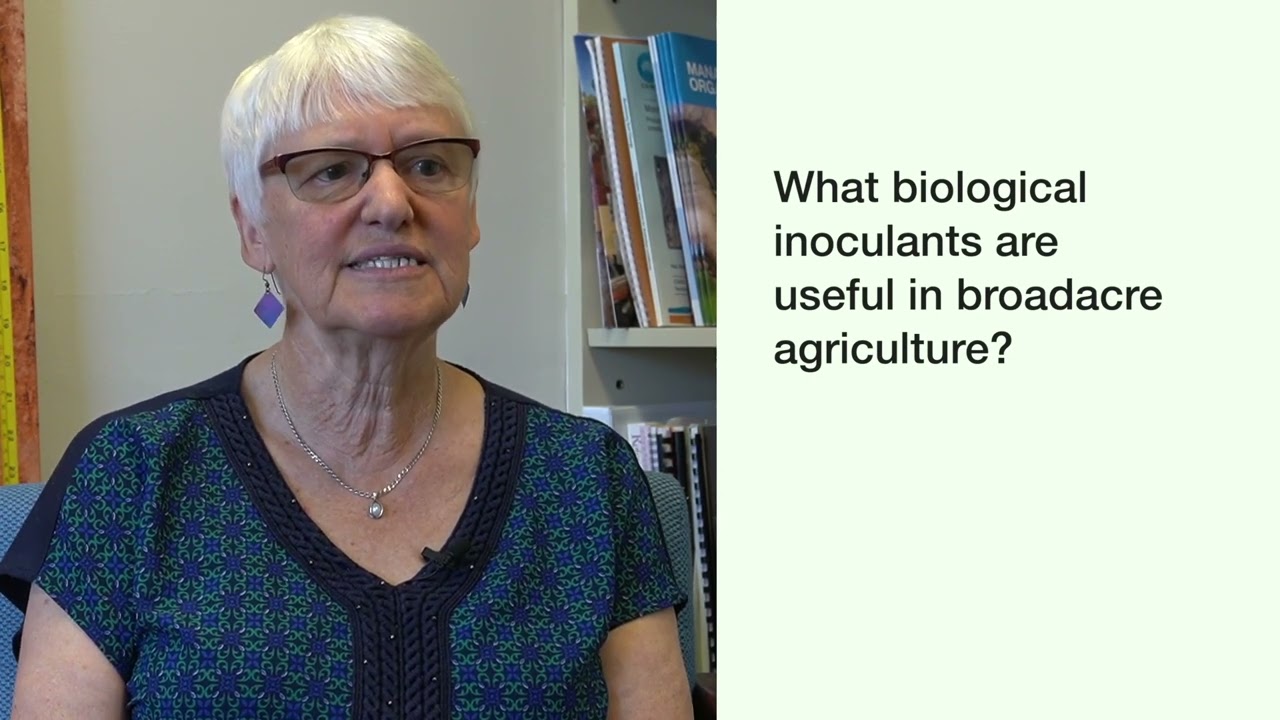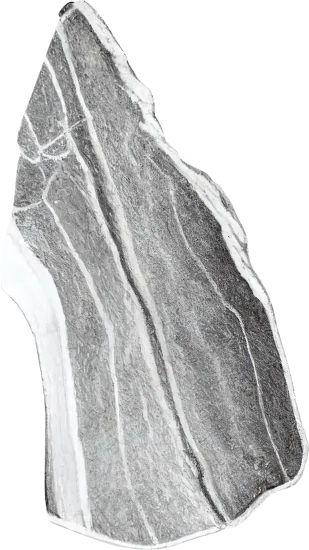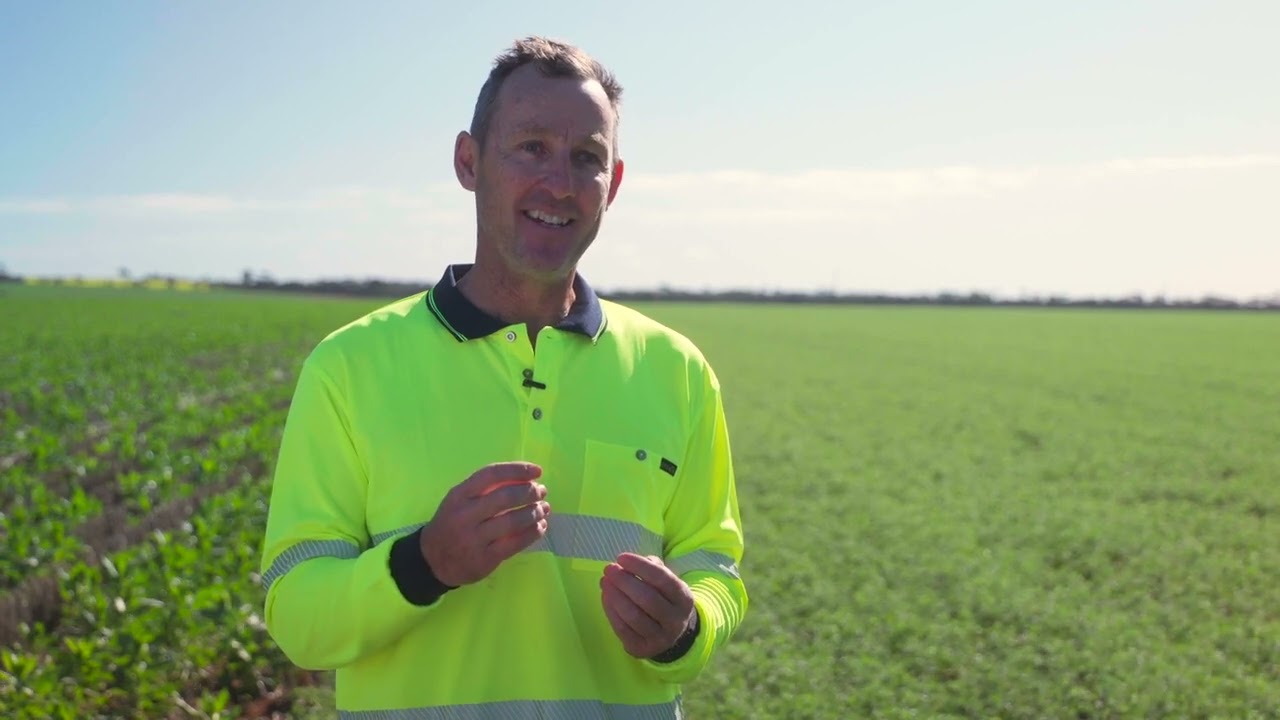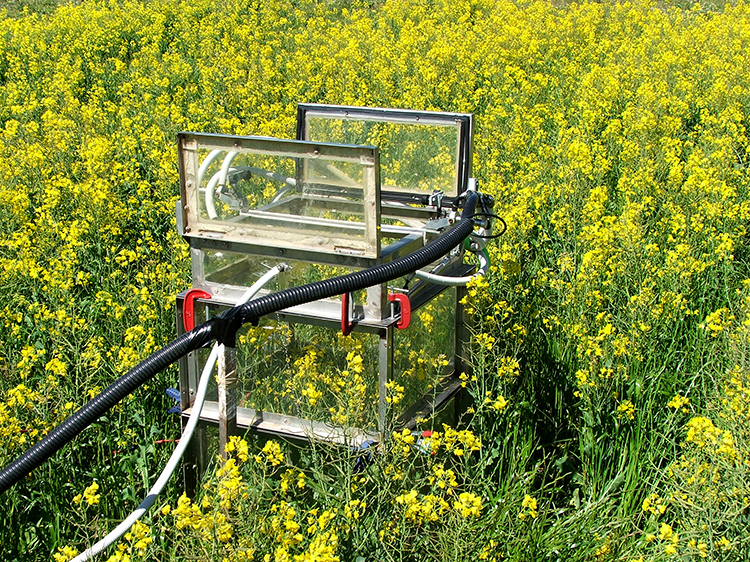What is soil biology?
Soil biology is the study of microorganisms and fauna that live within the soil – collectively termed the soil biota. These soil-dwelling organisms provide essential ecosystem services that enable a soil to function.
This includes supporting plant growth, organic matter decomposition and the recycling of organic carbon, nutrients and chemicals between soil–microorganism-plant-water and atmosphere. In addition, larger soil organisms can engineer the soil profile, altering aeration and water infiltration; while microscopic organisms can stick and bind soil particles together, thus improving soil structure. Not all soil biota are however beneficial, with soilborne diseases and nematode pests causing widespread and substantial plant yield loss.

Soil is teeming with life. Soil biology is responsible for the functioning of the soil and as such underpin agricultural systems.
From Soil Quality: 5 Soil Biology (Murphy et al. 2021). Video audio: Daniel Murphy, Murdoch University; video animation and editing: Science with Style; images: AdobeStock, CSIRO, the University of Western Australia, Science Photo Library, DPIRD, University of Nottingham, Freya Murphy, Science with Style, Ben Crossthwaite Photography.
-
A wide range of organisms (soil biota) live in the plant litter on the soil surface, and within the soil profile in close contact with soil organic matter including plant roots.
-
Carbon substrates (food) are normally in short supply – thus soil organisms are often concentrated in surface litter, upper layers of soil, and in the rhizosphere.
-
Adequate moisture supply is the most important factor influencing microbial life in soils.
-
An active soil biota is essential to improve and sustain agricultural production – a healthy soil is one that is full of life where organic material and nutrients are recycled.
-
Beneficial organisms improve soil fertility, make nutrients plant available, improve soil structure and help suppress disease.
What are the beneficial biology groups in my soil?
Soil is one of the most biologically diverse habitats on Earth. Soil fauna range in size from single-celled animals not visible to the naked eye (microfauna), to those which can be easily seen (macrofauna). Through complex predator-prey interactions (food webs) soil biota have a large impact on key soil functions including organic matter breakdown and nutrient transformations within the soil. Microorganisms are the most abundant component of the soil biota with a handful of soil containing billions of individual microbial cells, as well as metres of fungal hyphae and a variety of microfauna, including millions of nematodes. At a global scale, the total mass of soil microorganisms is influenced by the soil, climate and plant productivity.
The total number of organisms, species diversity and their activity will fluctuate with changes in the soil environment. These living organisms can be classified by size into:
- macrofauna (> 10 mm) such as earthworms, termites and other large insects
- mesofauna (range in size from 200 µm to 10 mm) such as mites and collembola (or springtails)
- microfauna (20 to 200 µm) such as protozoa and nematodes, and
- microflora such as fungi and bacteria.
Collectively, these groups make up the soil biota and the total mass of organisms comprises the soil microbial biomass. The soil food web describes a complex system of how soil-dwelling organisms interact and facilitate the transfer of energy between the environment, plants, animals and soil biota.
Soil food web
Microflora (μm-sized)
Collectively bacteria, fungi, algae and other microorganisms exist as either free-living or symbiotic organisms. Bacteria and fungi are primarily responsible for nutrient cycling (especially nitrogen, phosphorus and sulfur) and are active in the decomposition or build-up of soil organic matter. They also help in the formation of stable soil aggregates and degradation of soil contaminants.
Bacteria are single-celled prokaryotic (no membrane around the nucleus) microorganisms that are either free-living in soil, water, or diseases of plants or animals.
Evolutionarily distinct from bacteria and eukaryotes, archaea are single-celled, prokaryotic microorganisms living in environments low in oxygen (e.g. water, soil) with a structure similar to bacteria. They form the third domain of life.
Fungi are eukaryotic (membrane bound nucleus) organisms that develop from reproductive bodies called spores, and can develop extensive hyphal networks.
A mycorrhiza is a symbiotic association between a fungus and a growing plant – referring to the role of the fungus in the plant’s root system. Mycorrhizae penetrate the cell wall of roots and effectively act to extend the exploration capacity of a plant via an extensive network of hyphae with a comparatively higher surface area. They play an important role in plant nutrition and facilitate the exchange of nutrients, such as phosphorus, and water taken from the soil. The mycorrhizae, in return, obtains simple carbohydrates from the plant. In agricultural systems, arbuscular mycorrhizae are found in many crop species with variable responses associated with changes in soil type and nutritional background.
Microfauna (μm-sized)
Organisms with animal-like characteristics are classed as microfauna. Microscopic in size, protozoa are single-celled animals, such as, amoebas and flagellates. Found in every habitat on earth (including within other organisms), they have an essential role in regulating populations of fungi and bacteria; and as decomposers are capable of breaking down a vast range of organic substrates. In decomposing organic substrates, they have a role in nutrient cycling and are themselves a food source for lower trophic levels.
Nematodes are a dominant component of the soil fauna with millions of nematodes per square metre – even in relatively poor soils. Found in freshwater, marine and terrestrial environments, nematodes are primarily aquatic-moving and, even in arid soils, live within thin water films. Plant-parasitic nematodes are sometimes referred to as eelworms and are capable of infecting plants (plant pathogens). Nematodes have a diversity of lifecycles and can be present at different trophic levels, with many nematodes grazing on bacteria, fungi, organic matter, insects and other nematodes.
Mesofauna (mm-sized)
Mesofauna are invertebrates 0.2 to 0.5 mm in length and are relatively easy to see in agricultural topsoil and surface litter. Included in this group are larger nematodes, mites, microarthropods and springtails (collembola) that regulate fungi and other microflora through predation. Mesofauna populate existing habitable pore spaces in soil and consume a wide range of organic materials – living or decaying. They have an important role in the soil carbon cycle through fragmentation of surface organic residues.
Macrofauna (mm-sized)
Larger than 0.5 mm in size, ants, termites, dung beetles and earthworms are the soil engineers altering the soil habitat with networks of tunnels and pores – often influencing the chemical, physical and structural properties of soil. They are capable of fragmenting and transporting organic matter (and associated microorganisms) from the soil surface to deeper soil horizons. Macrofauna, including, millipedes, slugs, snails, enchytraeids, macroarthropods and spiders, also serve as a food source to above-ground vertebrates and birds. Few groups are more diverse or complex with respect to their evolutions, behaviours and ecology.
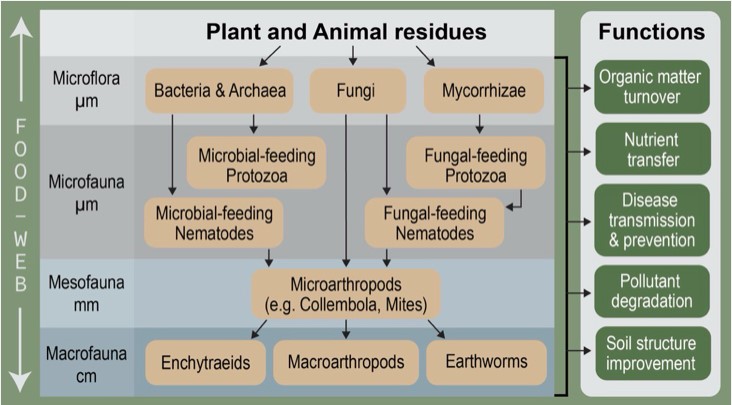
Soil biology is vitally important in our crop and livestock production systems due to the impact it has on plant health, as well as soil properties and processes. Soil organisms recycle soil organic matter by feeding on dead plants and animals, manure, and other soil organisms. They break the soil organic matter into smaller pieces for further decomposition by smaller organisms and play a key role in the transformation of plant available nutrients. Mucilage, fungal hyphae and waste products produced during decomposition bind soil particles together and further help improve soil structure and fertility.
Insects, fungi and bacteria perform various functions in soil – some of which are beneficial to plant growth and others that are detrimental. Desirable organisms are those that provide a net benefit to soil health and plant growth. For example, some organisms have a role in physically breaking up larger pieces of organic matter to create a more favourable substrate for the microorganism decomposers, whilst others suppress disease, and yet others form a symbiosis with plants to help their roots take up more nutrients.
In agriculture, the ‘big four’ important organisms are earthworms, arbuscular mycorrhiza fungi, non-symbiotic nitrogen fixers and rhizobia. Bacteria and fungi are the most numerous, being several million organisms and producing up to 1 km of fungal hyphae in each gram of soil.

Role of beneficial organisms
The major functions of soil organisms in our production systems include:
Decomposition of organic matter
Organic matter shredders such as mites, beetles and collembola break up large pieces of soil organic matter into smaller pieces, with some digestion.
Most soil organisms break down complex organic compounds found in plant and animal tissue. During this process, nutrients are made available for plant uptake; and humus is formed which has other beneficial properties related to soil structure, cation exchange capacity and water holding capacity. During each phase of decomposition, about 50% of the organic carbon is released as carbon dioxide and 50% remains as a humus residue. As the residues go through phases of decomposition, the humus becomes more and more recalcitrant (or stable).
Nutrient cycling and availability
Soil nutrients such as nitrogen, phosphorus and sulfur are made available to plants when soil organic matter is decomposed by soil organisms to obtain carbon. Nutrients in excess of microbial requirements are released in forms that are readily plant available (e.g. nitrates, phosphates and sulfates). Stored nutrients may also be released when organisms ‘turnover’ or die. Some organisms, such as arbuscular mycorrhiza fungi and rhizobium bacteria form a mutually beneficial (symbiotic) relationship with plants, actively helping plants take up nutrients in exchange for plant sugars which provide energy for growth.
Rhizobium spp form a symbiosis with legume roots and ‘fix’ nitrogen from the atmosphere, whilst arbuscular mycorrhiza fungi improve plant uptake of phosphorus in a wide diversity of plant species when that nutrient is deficient. There is evidence that free-living nitrogen fixing organisms (bacterial, fungal and algal) can play an important role in crop nitrogen supply by fixing nutrients in the soil.
Biological fixation in low input dryland farming is highly desirable and in some instances, free-living nitrogen (N) fixation can contribute up to 10-20 kg N/ha/yr – though high levels of inorganic nitrogen will decrease fixation. In addition, some soil living organisms secrete substances that act as growth promoters. For example, in many native trees and shrubs of the Proteaceae family, microorganisms promote the growth of a dense mat of fine proteoid roots that enhance phosphorus uptake.
Suppression of soil diseases and pests
A larger, more diverse microbial community competes with pathogens for nutrients and prevents a single pathogen from being able to dominate and become a major disease problem. Soil organisms including protozoa, nematodes and fungi (e.g. Trichoderma) that feed on smaller organisms can help suppress disease by regulating the number of pathogenic organisms in the soil. A healthy soil is a complex and dynamic system that is teeming with life, inclusive of all the organisms to ensure optimal soil functioning.
Degradation of pesticides and pollutants
Most pesticides, especially herbicides and insecticides, are organic compounds and are therefore a potential food source for soil organisms. Soil organisms play an important role in degrading pesticides and reducing their accumulation in the soil. The short term effect of pesticides on reducing the soil biota population is largely transitory, though longer term use can influence soil biodiversity and function.
Improved soil structure
Larger soil organisms such as earthworms provide a natural mechanism for improving and maintaining soil structure by mixing soil and creating channels as they move through the profile, enabling proper aeration and drainage.
Waste products excreted when organisms feed on soil organic matter also help bind soil particles into larger aggregates. For example, bacteria produce sticky organic gums and fungi develop thread-like hyphae which help bind soil particles mucilage which, like fungal hyphae, binds particles together so that the soil aggregates do not disintegrate when wet and stop the soil eroding easily.
Factors influencing the survival and functioning of beneficial soil biota
The total number, diversity of species and activity of soil organisms can fluctuate greatly as the soil environment changes. These changes may be caused by natural or imposed factors. Although individual numbers of soil biota are exceedingly high, they colonise considerably less than 1% of the total soil surface. Biota are not evenly distributed within the soil, nor is their distribution random. Instead, soil biota self-organise to form biological ‘hot spots’ of activity where the local microsite conditions are favourable for growth and activity and where predation by larger organisms is restricted.
The conceptual diagram below considers the various factors that influence the microbial biomass pool size.
Actual measured microbial biomass reflects the size of the microbial biomass pool when soil is sampled. Microbial biomass responds dynamically to seasonal variables and in south-western Western Australia is at its lowest during the summer-autumn fallow when there is little or no plant growth.
The depth and physical matrix of the soil as determined by soil texture and specifically clay content, are determining factors in habitat provision, water availability and organic matter (substrate) availability and defines the potential soil microbial biomass pool size. Microorganisms are most abundant in surface soil where substrate availability (e.g. plant residues and organic matter) is most concentrated and pores are sufficiently well aerated.
Climate, specifically rainfall and temperature, is the key driver for microbial activity and growth, and limits the attainable microbial biomass pool size. Rainfall contributes to water films, providing substrate and moisture required to support biological function, with an increasing number of biologically-active days linked to improved soil biological functioning. Microbial activity increases with higher temperatures to a maximum of about 40°C, over which biological function may be impaired. Net primary productivity, or plant biomass accumulation is directly influenced by climatic conditions with limitations to plant growth directly impacting residue return to the soil, including below-ground carbon accumulation. Severe rainfall and wind events can cause soil erosion, displacing significant amounts of organic matter and associated soil biota.
Management practices influence microbial biomass via both direct and indirect mechanisms, with significant capacity to improve biological fertility as determined by climate and soil properties.
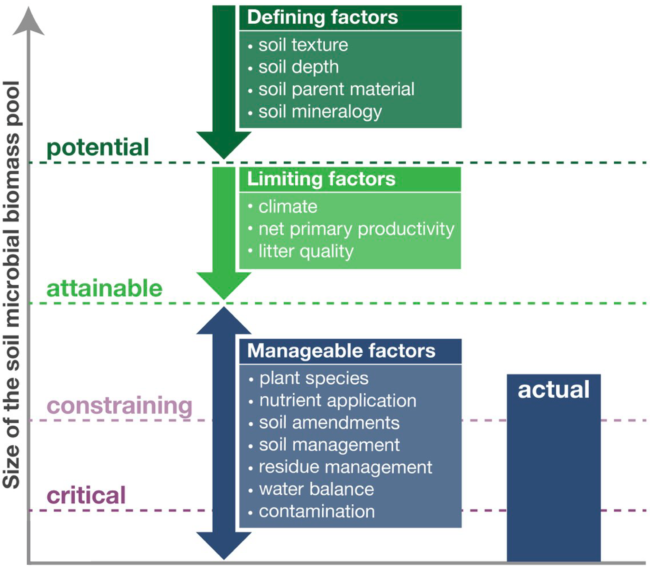
An understanding of where biota live in soil, their tolerances to soil and climate conditions, and how this is altered by agricultural management is required if we are to manage these organisms to maximise the benefits (e.g. nutrient release) and minimise the negatives (e.g. soilborne pathogens). Understanding habitat requirements of soil biota is also required for microbial inoculant design if these species are to survive once added into the soil environment where competition between organisms for space, food and resources is already fierce.
Soil environment
Soil organisms require oxygen and moisture. Soil structure must support adequate water and gas exchange. Microbial activity takes place primarily on or within pieces of soil organic matter, in the rhizosphere adjacent to active roots, in pore spaces and along old root channels. Activity is severely limited in dry or waterlogged environments and by low temperatures. In northern regions, drying of the surface soil in the dry season is a major controller of soil biological activity; in the south, the combination of crop residues, warm soil and moisture leads to peaks in biological activity during summer rains or following the autumn break.
Changes in soil pH can alter biological activity, function and survival of the microbial community – bacteria prefer a relatively neutral soil pH (pHCaCl2 6.0 to 7.5). As soils become more acidic, microbial activity slows down and earthworms disappear. Fungi become more important than bacteria at low pH, and the rate of soil organic matter decomposition decreases because fungi grow more slowly than bacteria.
‘Hot spots’ of soil biota within soil include:
- The surface where leaf/animal litter and organic matter are concentrated
- Pore spaces between mineral particles and soil aggregates
- Within voids inside soil aggregates where soil mineral particles are bound with organic materials
- Areas influenced by earthworm, and or termite burrows
- Areas influenced by plant roots (e.g. rhizosphere, root biopores)
Rhizosphere
Plant roots are a seasonal and dynamic components of the living soil that become colonised by some soil biota. The rhizosphere represents the zone where the biology, chemistry, physics and hydrology of the soil are influenced by the root. This zone can extend up to a few millimetres from the plant root and is characterised by key differences (including increased carbon, water and nutrient availability) compared to the surrounding bulk soil.
The pH of the rhizosphere can be 1–2 pH units different to that of the bulk soil. The generation of rhizosphere acidity or alkalinity is directly related to the form of ion uptake by plant roots. When plants take up cations (e.g. ammonium; NH4+) the rhizosphere pH decreases while taking up anions (e.g. nitrate; NO3–) causes the rhizosphere pH to increase. For example, most plants (especially legumes) take up more cations than anions, which causes a net release of acidity (hydrogen ions; H+) into the rhizosphere.
Plants release up to half of their carbon obtained through photosynthesis into the surrounding rhizosphere soil via root exudates, mucilage and sloughed-off root cells. This supply of labile carbon feeds soil organisms that are typically organic carbon limited within the bulk soil. In particular, fast growing bacteria (rhizobacteria) respond quickly to the arrival of a plant root and to this release of carbon and nutrients. They rapidly colonise the root and rhizosphere soil, increasing in abundance and activity. Up to approximately 40% of the total plant root surface becomes colonised by soil microorganisms.
The plant derives a range of benefits from their close association with rhizosphere organisms including enhanced stress tolerance, host immune regulation, and protection against soilborne pathogens and insects. The enhanced microbial activity that occurs within the rhizosphere also directly benefits the plant through accelerated nutrient cycling. This includes the symbiotic relationships between legume plants with nitrogen-fixing rhizobia and the colonisation of almost all plant species with mycorrhizal fungi (lupins and canola being notable exceptions) that act as an extended root for nutrient (particularly phosphorus) and water capture.

Organic matter
Microorganisms use carbon and nutrients in plant and animal residues to support growth and activity. A large proportion of soil organisms are concentrated in locations where a ready supply of carbon is available as either fresh residues or root exudates (i.e. at the soil surface, or in the rhizosphere).
An organic cover on the soil surface (e.g. from residue retention or pasture) enhances the survival of a range of organisms including earthworms by increasing the length of time soils stay moist and providing a buffer to extreme temperatures and solar radiation. A lack of host plants during long fallows depletes the number of arbuscular mycorrhiza fungi, and low plant cover minimises the return of organic matter to soil.
Soil disturbance
Whilst bacteria are not significantly affected by cultivation, soil disturbance breaks up fungal hyphae networks (very fine threads which aid in soil aggregation) and destroys biopores formed by earthworms and other soil fauna. Cultivation increases the decomposition of organic material previously protected within soil aggregates, resulting in more rapid rundown of soil carbon, whilst zero tillage encourages soil organic matter retention and slows residue decomposition.
Agronomic management
Agricultural practices can be beneficial or detrimental to the soil biota, for example the type and nutrient ratio of plant residues can alter the relative size and activity of populations of different organisms (e.g. fungi vs. bacteria) and the rate of decomposition and its products. High inputs of nitrogen (N) and phosphorus (P) fertiliser reduce symbiotic fixation of these nutrients by rhizobium and mycorrhiza, but provide nutrients for non-symbiotic organisms and promote increased plant growth resulting in greater organic matter returns. Zero tillage retains stubble residues and maintains soil structure, promoting the growth and survival of soil biota.
Pesticide and herbicide management
There appears to be little or no long-term effect on soil biota from most pesticides. The exception to this is soil fumigants, which eliminate all soil biota and the use of which has now largely been ceased. A soil with a diverse microbial population can adapt to use virtually any organic chemical that is applied to the soil. There are short-term effects from some pesticides (e.g. insecticides, miticides and fungicides) but once their residues are degraded the biota population recovers. The frequency of use will alter the microbial communities, favouring organisms that are able to degrade the chemical residues. Consequently, recovery of the microbial population after single use applications is relatively rapid (within 20-40 days). However, excessive use of some herbicides (e.g. copper based herbicides) can depress selected groups of micro-organisms over a longer time.
Where observed, the effect of pesticides on soil microorganisms is dependent on a number of factors. For example, negative effects are more common when chemical is applied directly to soil and on coarse textured soil types. Any direct effects (i.e. toxicity) are dependent on type and specificity of the chemical, susceptibility of target species as well as application rate, and may last up to 6-8 weeks; whereas indirect effects (i.e. changes in nutrient availability) take longer to be observed. Nitrifying bacteria are usually the most sensitive to pesticide applications.
Features of a soil with biological fertility
- An absence of dominant pathogenic organisms and/or disease suppression.
- Good drainage and aeration. Aerobic soil conditions that allow the exchange of oxygen and carbon dioxide
- Neutral or non-acidic soil pH. Microbial activity slows down and earthworms disappear as soils become more acidic.
- Increased plant residue input (organic matter is the fuel which drives the soil biota).
- Have adopted zero or minimum tillage systems – every time a soil is cultivated, a flush in microbial activity increases the loss of soil organic matter and can lead to a breakdown in soil structure.
- Soils with a greater diversity of organisms generally demonstrate greater resilience – the ability of soil to recover rapidly after an imposed stress (functional capacity retained).
Encouraging beneficial soil organisms
Organisms are most abundant in the top 10 cm of agricultural soils. The location of soil organisms is influenced by tillage, aeration, moisture, supply of organic residues and the presence of plant roots. Sufficient time after a disturbance should be allowed for the establishment or restoration of soil biological fertility and will vary for particular soils and land management. Organic matter is the fuel which drives the soil biota and should be retained to maximise nutrient cycling and improve soil aggregation.
The following is a list of ‘dos’ and ‘don’ts’ for maintaining soil organic matter and developing a healthy soil biota.
Organic matter inputs
Increasing organic matter inputs will result in a larger, more diverse microbial population and decrease the risk of disease expression
Diverse crop rotation
Rotate crop and pastures to provide a more diverse food source to support a larger, more diverse range of organisms.
Legumes fix nitrogen from the atmosphere and provide a disease break – their residues have a lower C:N ratio and are more-easily decomposed by soil biota than cereal straw.
Avoid soil conditions and management practices (i.e. monoculture) that enhance the growth and survival of plant pathogens.
Avoid long fallows with no vegetative growth or soil cover.
Reduce tillage
Cultivation disrupts soil aggregates and exposes previously protected soil organic matter to decomposition, producing an initial flush in microbial activity but then a longer decline associated with the loss of their soil organic matter food source
Tillage destroys fungal hyphae networks and bio-pores which contribute to soil structure, and discourages earthworm activity
Adopt zero tillage, or reduce the frequency of cultivations
Strategic tillage to overcome soil constraints still disrupts biopores and fungal networks, however the benefit of overcoming the constraint leads to increased plant growth, water infiltration, improved pH (depending on the constraint targeted) – all which are beneficial to soil biology in the longer term.
Maintain soil structure
Soil management to reduce compaction and waterlogging (which creates anaerobic conditions and inhibits normal aerobic organisms) is beneficial for a healthy soil biota.
Maintain a favourable pH range
Liming to keep soil pH in a range favoured by plants (pHCaCl2 5.5-7.5) will also benefit soil organisms, resulting in faster soil organic matter breakdown, increased nitrogen fixation and productivity.
Stubble retention and ground cover
Topsoil lost by erosion contains soil organic matter and the soil organisms required to maintain productivity.
Ground cover provides a food source for soil organisms, contributes soil organic matter to soil maintaining structure, increases the number of days a soil remains moist (‘biologically active’ days), and buffers the soil against extremes in climate.
Burning removes much of the carbon substrate (and nutrients) suitable for microorganisms, limiting microbial activity and decreasing the population size of soil biota.
Fertilisers
Fertilisers increase crop growth and residue inputs, indirectly supporting higher microbial populations.
High rates of mineral nitrogen fertilisers suppress nodulation and nitrogen fixation by legumes, and soluble phosphorus fertilisers inhibit arbuscular mycorrhizal symbioses.
Fertiliser inputs should be used strategically to complement nitrogen cycling from organic matter and enhance the activities of arbuscular mycorrhizal fungi.
Applications of liquid nitrogen fertiliser can potentially reduce microbial activity for 5-6 weeks.
Appropriate use of pesticides
The appropriate use of herbicides may be less harmful to the soil environment and organisms, than traditional weed control techniques of cultivation and stubble burning.
Soil microbial populations adapt to organic chemical inputs; therefore pesticides are unlikely to have a long-term negative impact where chemical application rates are low, or where re-application of the same herbicide within a short period is avoided.
Reduce the use of copper based fungicides (these can have a long-term effect in suppressing soil biota).
Foliar applications are less damaging than those applied directly to soil.
Microbial amendments
- Nitrogen fixing bacteria (Rhizobia spp.) used to inoculate legume seeds should be selected to match the host, soil characteristics (such as pH) and environmental conditions
- A plethora of commercial products (bio-inoculants and bio-stimulants) that claim to increase beneficial soil biology are now available, though often they have not been widely tested.
- Landholders should be aware that the efficacy and cost effectiveness of many of these products has not been widely established and much of the information provided is misleading – seek local trial data confirming and quantifying benefits before making a large investment in such products.
- Survival of inoculated microorganisms is dependent on the delivery mechanism, timing of application (in respect to soil condition and food availability) and the diversity/activity of the larger indigenous population. The most likely candidates for success are endophytes or other microorganisms that colonise and survive within plant tissue (i.e. roots). Other microorganisms added to soil in small numbers are unlikely to survive the rapid turnover in the biota population or to have a significant effect on plant growth.
To date, with few exceptions (particularly Rhizobium and some newer fungal inoculants)) there has been little validated scientific evidence published on the benefits of adding microbial inoculums to soil. There are currently many commercial products on the market that are ill-defined and untested. The lack of information extends not only to the potential benefits associated with the use of these products but also to the best mode of application, length of efficacy and effects of climatic influences (since many of these products are tested overseas or in high rainfall environments). For many years the physical and chemical aspects of soil have been well researched and defined – what is now apparent is that we need rapid and extensive research on soil biological properties and soil organisms to help determine how soil biology can be managed to increase the productivity of a soil.
The lack of clear evidence not only extends to microbial inoculums but also to products designed to stimulate the biota already have in soil (for example through the application of organic ‘food’).
There is no doubt that increasing our knowledge of soil biology could provide enormous potential for improving soil health and function, but also provides the opportunity for commercial gain. Remember the following:
- There is very little, if any, biological activity in dry soils – consider the survival potential of any applied organisms or how a stubble breakdown product might work when the soil is dry.
- There are billions of soil organisms not yet identified (many are very hard to distinguish and identify) that perform important soil functions (that are more-readily measured) – consider investing in understanding your soil and how it functions.
- There are things you can already do to support the development of ‘good’ biology (i.e. zero tillage, stubble retention) – start with the basics at low cost
- The potential beneficial effects of soil biology though important can be limited by other soil constraints such as compaction and soil acidity – target amelioration of the most important significant constraints first – you will be supporting the development of ‘good’ biology at the same time
- Ask yourself what it is the soil biology product is delivering that is unique, will it work in your environment (i.e. ask for local validated data or if not available for a free sample to be included in a replicated test strip trial), and most importantly is it addressing your most constraining problem?

Abbott LK, Macdonald LM, Wong MTF, Webb MJ, Jenkins SN, Farrell M (2018). Potential roles of biological amendments for profitable grain production – A review. Agriculture, Ecosystems & Environment 256: 34-50.
Farrell M, Macdonald LM, Jenkins SN, Webb MJ, Wong MTF, Abbott LK (2017). Understanding Biological Farming Inputs. Final report to the Australian Grains Research and Development Corporation, project number CSO00044. Paper presented at GRDC Grains Research Updates 2017: [online]
Page references and acknowledgements
Material on this page adapted from:
- Hoyle FC (2007). Soil Health Knowledge Bank.
- Murphy D, Hoyle FC, Collins S, Huberli D and Gleeson D (2021). Soil Quality: 5 Soil Biology. SoilsWest, Perth, Western Australia. [Access]
Last updated July 2024.

